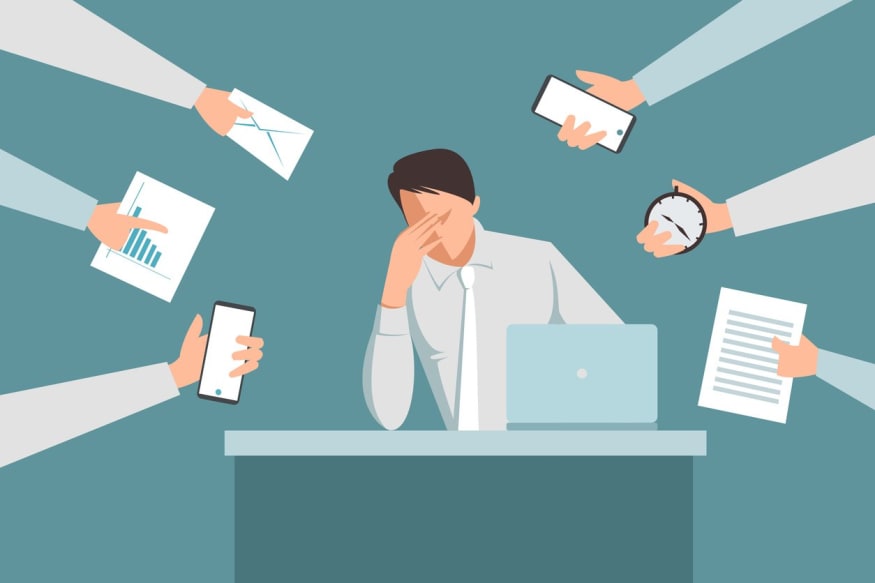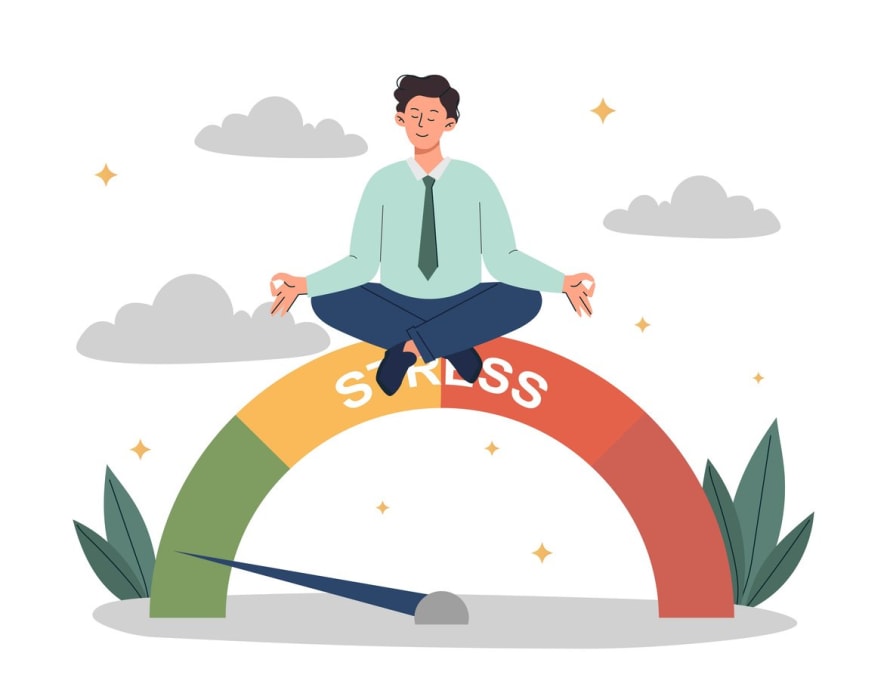The effects of stress in the workplace are profound, impacting productivity, health, and workplace culture. This article outlines key causes of stress and offers evidence-based strategies to counteract its negative impact. Discover how to navigate workplace stress for a healthier, more balanced professional life without the fluff.
Key takeaways
- Workplace stress is caused by a variety of factors, such as heavy workloads, interpersonal conflicts, and job insecurity, leading to reduced productivity, increased absenteeism, and a potential rise in health-related issues.
- Stress reduction strategies include effective time management, establishing personal boundaries, open communication, and utilizing tools like Kumospace for better virtual collaboration and employee engagement.
- Employers can help manage stress by implementing supportive policies, fostering a positive work culture, and integrating platforms that cater to remote work preferences; additionally, employees should practice self-care through mindfulness, exercise, and healthy lifestyle habits.
Understanding workplace stress

Work-related stress arises when job demands exceed an individual’s capacity to cope. It’s like being stuck between a rock and a hard place, where the rock is the workload and the hard place is the limited time and resources you have to deal with it. This stress can surface in various forms, including physical symptoms such as fatigue, headaches, and sleeping difficulties, and psychological ones such as depression, anxiety, and feeling overwhelmed.
But what triggers this stress response? Is it just the sheer volume of work, or are there other factors at play? We will explore these questions further in the upcoming section.
Factors contributing to workplace stress
Common stressors in the workplace include:
It’s the looming deadline for a project you’re behind on, the ever-growing pile of work on your desk, the tension with a colleague, or the uncertainty about your job’s future. Additionally, specific stressors such as long work hours, heavy workloads, organizational changes, and insufficient resources can significantly contribute to workplace stress.
These stressors are like the invisible weights we carry on our shoulders, silently but steadily draining our energy and leaving us feeling exhausted and overwhelmed. But the impact of these stressors doesn’t stop at just fatigue and feeling overwhelmed. They can have far-reaching consequences on an employee’s performance and overall health.
Impact of stress on employees
Work-related stress can lead to:
- a decline in employee productivity
- a tendency for increased absenteeism
- a reduced level of initiative
- strained relationships at work
- an overall drop in work performance
It’s like driving with the handbrake on; no matter how hard you push on the accelerator, you just can’t seem to move forward efficiently.
Physical symptoms induced by the body’s stress response, including the release of stress hormones, encompass a faster heartbeat, quicker breathing, and constricted blood vessels, which can contribute to more frequent health-related absences and increased blood pressure. By addressing job stress, organizations can reap numerous advantages such as improved employee morale, higher productivity, greater focus, fewer workplace injuries, less sickness-related absenteeism, and a decrease in employee turnover, ultimately helping employees avoid chronic health conditions.
So, how can we address this multi-faceted problem? The answer lies in strategic stress management.
Strategies for reducing workplace stress

Reducing workplace stress involves a combination of several strategies. These include:
- Problem-solving
- Priority setting
- Seeking support
- Honing time management skills to minimize unavoidable stressors
These strategies are aimed at addressing the root causes of stress rather than merely its symptoms. They encompass setting clear boundaries to avoid unnecessary responsibilities and seeking support when overwhelmed, because nobody should have to tackle stress single-handedly.
Moreover, practical mindfulness techniques such as progressive muscle relaxation and breathing exercises can be done even at work to quickly alleviate stress. These techniques serve as an oasis of calm in the desert of workplace stress, providing a quick and effective way to unwind and recharge. We will now examine these strategies more closely.
Time management techniques
Effective time management is a cornerstone of stress reduction. One of the strategies to stay on top of your priorities and avoid procrastination is making a to-do list organized by priority and setting realistic deadlines. Consider it as a road map for your workday, guiding you through tasks based on their importance and urgency.
Other techniques to improve productivity include:
- Timeboxing: scheduling tasks in a calendar to focus on priorities
- Learning to say no to avoid overcommitment
- Using the Pomodoro Technique: using timers to create uninterrupted work blocks and improve focus
These methods can help individuals and teams increase productivity and achieve a state of flow.
Lastly, batch processing emails and messages during specific times of the day can minimize distractions, helping to maintain concentration on high-priority tasks and allowing you to focus on the present moment.
Establishing boundaries
Creating clear boundaries, especially with individuals who contribute to stress, can help safeguard your well-being and lessen stress levels. This can ultimately lead to a more balanced and peaceful life. The idea is to create a buffer zone between you and the stressors, enabling you to conserve energy for the tasks that truly matter.
Boundaries in the workplace contribute to decreased stress levels by:
- preventing employees from feeling overburdened with excessive workloads
- allowing for better work-life balance
- promoting a healthier work environment
- reducing conflicts and misunderstandings
By setting and maintaining boundaries, you can create a more positive and stress-free work experience.
A work environment that respects personal boundaries can lead to improved job satisfaction, reduced employee turnover, and a more positive corporate culture. Therefore, educating employees on how to communicate their limits and when to say no is crucial in maintaining these boundaries and respecting individual capacity and well-being.
Encouraging communication and collaboration
Organizations that foster a culture of open communication, including recognition of employee achievements and encouragement of feedback and dialogue, help alleviate workplace stress. Clear communication is a vital part of boundary-setting, reducing confusion and conflicts, thus enhancing teamwork and increasing productivity.
In today’s digital age, the use of virtual office environments like Kumospace can offer a solution to ‘Zoom fatigue’ by providing an alternative platform that avoids the mental exhaustion and irritability linked with traditional video conferencing techniques. Moreover, Kumospace focuses on fostering human connection and streamlining communication, which both lead to better organizational cultures. This brings us to our next point: the role of employers in managing workplace stress.
The role of employers in managing workplace stress

Employers play a critical role in reducing workplace stress. Being aware of employees’ unique emotional burdens, showing empathy toward their experiences, and helping them find and maintain a healthy work-life balance are all significant aspects of this role.
Moreover, effective workplace practices adopted by employers can support employees in managing stress. These practices range from implementing supportive policies to fostering a positive work culture, both of which we will explore in the following subsections.
Implementing supportive policies
One of the ways employers can support their employees’ well-being is by offering flexible working arrangements and endorsing time off when necessary. Flexibility in the workplace helps employees focus on productivity rather than hours worked, aiding in achieving a better work-life balance.
Another important supportive policy is providing resources such as counseling services and mental health days, which are essential for fostering a healthier work environment. Tailoring these policies to individual employee needs and offering benefits that are actually valued can significantly improve work-life balance.
Fostering a positive work culture
Creating a positive work culture involves acknowledging the individual differences among employees, leading to personalized work experiences and reduced workplace stress. The goal is to embrace diversity, not just demographically, but also in terms of skills, perspectives, and work styles.
Organizational culture and management practices have a significant impact on workplace stress levels and should be designed to contribute to a supportive work environment. This involves promoting collaboration, open communication, and mutual respect among employees.
In the next section, we will discuss how integrating Kumospace into your workplace can help achieve these goals.
Integrating Kumospace into your workplace
Kumospace is a virtual office platform designed to enable teams to work effectively regardless of their geographical locations. It offers a stress-free virtual environment to mitigate the impacts of workplace stress, offering a solution to how stress affects your work life.
Kumospace transcends its role as a mere platform; it serves as a tool for empowering employees, streamlining collaboration, and fostering a supportive and engaging work environment. This ultimately enhances work performance and reduces stress.
Enhancing work performance
Kumospace empowers employees and streamlines collaboration by functioning as a virtual office, potentially leading to enhanced work performance. With tools including online whiteboards and digital games, it is designed to strengthen team cohesion and foster camaraderie amongst team members.
These tools not only foster a sense of togetherness but also alleviate feelings of isolation that can often accompany remote work. This ultimately contributes to a stress-free and more productive working environment.
Addressing the impacts of workplace stress
Kumospace addresses workplace stress by catering to remote work preferences, where two-thirds of workers report higher productivity levels. The platform aims to counter low morale in the workplace by providing a virtual environment that supports employee engagement and connection.
Moreover, Kumospace contributes to addressing health issues arising from workplace stress by allowing for flexible work options that can lead to better work-life balance. This flexibility and the overall supportive environment that Kumospace provides can be a significant factor in reducing workplace stress.
Self-care practices for stress relief

While organizational strategies and supportive work environments play a significant role in reducing workplace stress, it’s equally important to practice self-care. Techniques such as:
- mindfulness and meditation
- walking
- strength training
- yoga
- taking spin classes
Deep breathing can significantly lower blood pressure and relieve stress, alleviating mental stress in just a few minutes.
Maintaining a balanced diet and getting at least seven hours of sleep per day are also key practices for reducing stress in the workplace. In the following subsections, we will delve deeper into these self-care practices.
Mindfulness and meditation
Mindfulness and meditation practices can promote relaxation and reduce stress by calming the mind and enhancing physical relaxation. Studies have demonstrated that mindfulness meditation practices can help decrease stress. Consider it as taking a mental retreat from the hustle and bustle of the workplace to a place of peace and tranquility.
Mindfulness meditation has several benefits, including:
- Facilitating metacognitive awareness
- Reducing rumination by disengaging from perseverative cognitive activities
- Improving attention and concentration
- Promoting positive affect
Overall, mindfulness meditation can contribute to your mental well-being.
Physical activity and exercise
Regular physical activity is another powerful stress reliever. It helps individuals manage stress more effectively and improves mood through the release of endorphins. Exercises such as yoga, tai chi, and aerobic exercises not only promote physical fitness but are also especially beneficial for mental wellness.
Regular participation in physical activity is linked with reduced symptoms of depression and anxiety, contributing to overall mental health improvement. Thus, it goes beyond merely breaking a sweat; it’s about disrupting the cycle of stress and anxiety.
Healthy eating and sleep habits
Maintaining a balanced diet can play a significant role in managing stress levels over time. Eating foods like eggs, avocado, and walnuts can help support mood regulation and energy balance, crucial factors in stress management. Think of it as fueling your body with the right nutrients to combat stress effectively.
Getting at least seven hours of sleep per day is another key practice for reducing stress in the workplace. Adequate sleep allows your body and mind to recharge, leaving you better equipped to handle stress. Implementing lifestyle changes such as a predominantly plant-based diet and adequate sleep can be practical elements of a comprehensive strategy for reducing workplace stress.
Summary
In conclusion, workplace stress is a multifaceted problem that requires a multi-pronged approach. From understanding the causes and impacts of stress to implementing effective stress management strategies, every step is crucial in paving the way for a healthier work-life balance. Integrating platforms like Kumospace into the workplace can further enhance work performance and reduce stress. Lastly, self-care practices such as mindfulness, physical activity, and maintaining a healthy diet and sleep pattern play an indispensable role in managing stress. Remember, stress might be a part of life, but it doesn’t have to rule your life.
Frequently asked questions
To be stress-free, you can eat healthily, exercise, practice mindfulness, get restful sleep, and avoid being too hard on yourself. It's important to take care of your physical and mental well-being to reduce stress.
Work stress can lead to a drop in performance, depression, anxiety, sleeping difficulties, cardiovascular disease, musculoskeletal disorders, and psychological issues. It is crucial for employers to address work-related stress as a significant health and safety concern and take measures to reduce unnecessary stress for their employees.
Stress can have a significant impact on your well-being, mental alertness, and productivity, leading to a lack of motivation and difficulties with concentration in both your work and personal life. It can easily affect not only your own performance but also that of your team and employer.
Common stressors in the workplace include deadlines, workload, interpersonal conflicts, and job insecurity. Long work hours, heavy workloads, organizational changes, and insufficient resources can also contribute to workplace stress.
Time management techniques, such as prioritizing tasks and setting realistic deadlines, can reduce workplace stress by ensuring manageable workloads and on-time completion of tasks.





